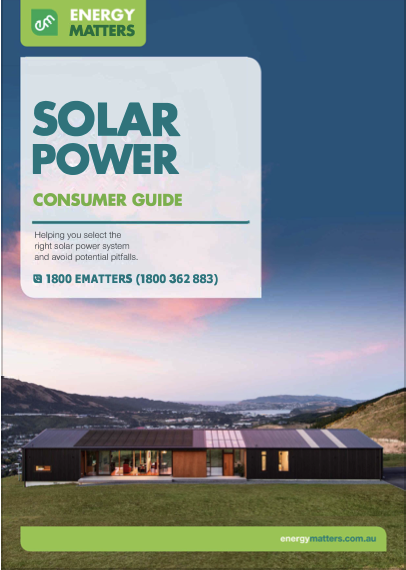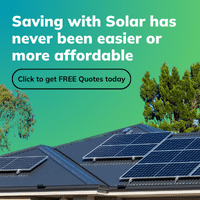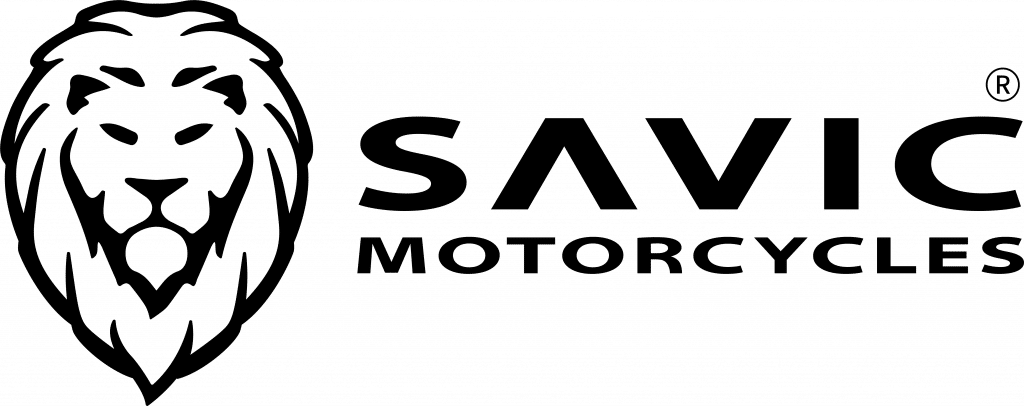So you’re interested in switching on to home solar power? Congratulations, you can save substantially on your power bills and reduce your household’s greenhouse gas emissions! Download our free solar consumer guide to ensure that you don’t encounter any traps. You can also get your free solar quotes.
Solar Consumer Guide
NEW VERSION! Includes valuable information on residential battery storage systems!
Some general solar purchasing advice..
Our free Solar Consumer Guide download explains in detail how a solar power system works. It includes diagrams, and outlines what you should consider when making a purchase decision.
The following is just some general advice regarding some of the traps and pitfalls you should consider when searching for a solar provider.
New technology, but old wisdom applies
Shopping for a solar power system and choosing a solar installer can be an exciting time for many people. But, as with any investment, you’ll need to be careful who you deal with.
Like in any industry, the solar power sector has its share of unscrupulous parties who have little interest in the technology, environmental benefits and your needs. They are only chasing your money. And, they’ll be ruthless in doing so. Basically, the old saying “if a deal sounds too good to be true, it most likely is” applies very much to purchasing a solar power system.
Avoid becoming a solar PV horror story
We’ve been in the solar power industry for some years and during that time, we’ve heard countless horror stories from customers regarding some vendors and solar installers. That includes everything from leaking roofs after installations occur to householders going into debt for decades.
As a public service, we’ve decided to publish some of the common tricks, traps, cons and scams so you can avoid them.
Are we chasing your business? Of course! But we are a renewable energy leader in Australia that is truly passionate about solar energy. Because of that, Energy Matters also firmly believes our industry needs to adhere to the highest ethical standards. It ensures protection for the consumer and a more level playing field for those of us involved in the solar sector.
Learn more: Download our full Solar Consumer Guide now.
Beware of fast talking sales people
Like shopping for a new car, be wary of over-exuberance on a sales person’s part. In some instances, this may be just genuine passion bubbling over. But in others, the sales person won’t understand what they are selling. Instead they may be focusing on hype to get you to sign on the dotted line. And boost their commission.
If a question hasn’t been answered properly or has been deflected, pursue a satisfactory response. In some cases, you may be better off just walking away and finding a company that will answer your questions the first time.
High pressure tactics
Every company uses terms like “deal ending soon”, “hurry before stocks run out” – it’s just the accepted language of marketing. However, some companies may state the offer they are touting ends the same day. Even when that information isn’t published on any of their literature or web site.
Ethical sales people will not place you under this type of pressure given the size of the investment. Especially if this is an initial enquiry and they’ve established you’re not overly familiar with solar power concepts or have some confusion.
Demand time to think things over and research or at least be clear on the cooling off period if you decide to sign on the dotted line. Better still, if you come under this sort of pressure, see it as an indication of what the company is like and avoid them altogether.
Home assessments
In years gone by, a home assessment could be a very desirable thing. However, not only has solar PV technology evolved, so have assessment methods thanks to powerful tools such as Google Earth that can zoom in on your rooftop.
While a home assessment still has its place in some situations, at times the representative visiting your home may have been directed to “sell, sell, sell”. His or her only goal may be to leave your house with a signed purchase order. Your needs will be considered secondary, or perhaps non-existent. You need to consider if you want that type of person walking in the front door of your home.
Ignoring simple energy efficiency solutions to reduce cost
A company genuinely committed to solar power is in business to make money, however they will often offer energy efficiency suggestions as to how you can decrease the cost of acquiring a system.
For example, if you still use inefficient lighting, an ethical company will point out that spending a hundred dollars on switching to compact fluorescent or LED’s could save you thousands of dollars on extra solar panels needed to power the energy inefficient lights. On the other hand, an unethical company will see this as a good opportunity for the sale of a larger system.
A system with a 4kW inverter is not always a 4kW system
In order to make a system appear more powerful, some companies may focus on promoting inverter size. A system with a 4kW rated solar inverter but with only 1.5kW of solar panels is a 1.5kW system. The larger inverter will not boost the amount of electricity generated compared to a smaller, suitably sized inverter.
While having a larger inverter can be of benefit as you may be able to add more panels at a later date, this leads on to another very important point.
System upgrades and “upgradeable systems”
Another important reason to use quality, well known components is in case you wish to upgrade your system in the future as it can be difficult to mix and match solar panels.
If you buy a system package with a larger inverter for purposes of upgrading at a later date, you need to be certain the company that manufactured those panels will still be around at that point – and producing the same panels.
Even if they are, if the panels are of low quality, the original solar modules may degrade more over period compared to a good quality panel. As a single degraded solar panel can affect the performance of an entire system; your upgraded system may not perform to its full potential.
Compare solar panels, inverters – everything
Package deals are a great way to save cash, but not all packages are created equal. For example, a company might use top quality solar panels, but skimp on the inverter, cabling and mounting system quality in the hope that the panel brand name will dazzle you and you’ll ignore the other components.
Cobbled together packages should be avoided as “compatible” does not necessarily mean optimal. Mixing good quality panels with poor quality solar inverters, or even using quality solar modules and inverters; but skimping on wiring quality will have an effect on a system’s performance and possibly, safety.
Designing an optimum rooftop solar power system is no simple task. Everything
must be taken into consideration; including:
- Panel voltage output
- Panel quality
- Wiring quality
- Switch gear durability
- Inverter quality
- Operating temperature ranges
- String arrangements
- Strength of mounting solution
- Resistance to weather
- Optimum positioning to eliminate panels getting dirty
- Inverter and panel matching
- Optimum inverter auto switching
Ascertaining that a system package is ready for our clients is a time intensive task. Two qualified engineers run a fine tooth comb over each Energy Matters kit before it is approved for sale to our customers.
Learn more – Download our full Solar Consumer Guide.
Grey market/counterfeit products
It’s not all that common, but in some cases in order to save money a company will obtain components on the grey market. This is where the component is genuine, but hasn’t come through the proper supply channels. This is also referred to as a “parallel import“. In these situations, if something goes wrong with the component, the manufacturer may not honour the warranty. In fact, a couple of major solar panel manufacturers have already stated they would not honour warranty on parallel imported panels – modules must be purchased via authorised Australian distributors.
It’s important to check with the company you are considering acquiring a system from that either they are an authorised distributor, or have sourced the panels through a local authorised wholesaler.
In extreme cases, counterfeit or cheaper “no-name” products will be used. This can not only prove more costly as the equipment won’t be eligible for rebates, but the equipment may not perform as well as established brands and present fire/electrocution hazards through shoddy workmanship. Look for proper certifications. The ‘CE Mark’ from Europe alone is worthless in Australia for solar panels as it’s a self-certification. In the case of solar panels, the safety standard IEC61730 apply, the panel must be classified as Class A modules as well as complying with either IEC61215 or IEC61646, depending on the module technology.
Low quality components
Not all solar panels are equal. While most panels will perform as rated in perfect conditions, poor quality panel performance will drop off dramatically in marginal conditions. “No name” panels may also use poor quality sealants that will do the job for the first couple of years, but then after that degrade to a point moisture enters the panel – and there is no easy fix for that situation.
An item often not closely scrutinised in a solar power system package is the inverter. An inverter converts DC electricity from the panels into AC electricity suitable for use in your home. Sometimes a package might have top brand solar panels, but may skimp on the inverter quality in order to maintain an attractive price. A low quality inverter will be inefficient and may have a shorter lifespan. Being an expensive item to replace, be sure a good quality inverter is included in your solar power system.
A good place for consumers to start when offered a PV package is to ask for the brand name for each component and then to research the brand history on the Internet.
Extra costs
A low advertised price mightn’t be just due to low quality components. While it’s not unusual for prices to vary based on the type of structure upon which a solar power system is placed; these extras should be clear. These could include:
- Tile roof
- Build frame on flat metal roof
- Split array
- Horizontal fixing of array
- Lifting and access equipment
- Cost of moving inverter
- Cathedral ceilings
- Travel charges
Fine-print extras can add thousands onto the final cost of a solar power system; so be very sure to read over quotes and contracts carefully before committing to purchase.
Certification of components and pre-certification installation
In order to claim rebates, all systems must contain certified components – that is, components certified in Australia and listed here. Some solar companies have the reputation of jumping the gun. They install components that are yet to recieve certification, but supposedly will “soon”. This means the customer has a system that cannot operate until such time the certification comes through. That is a risky business.
Component substitution
A trick some companies will use is to offer you a respected brand name at a good price. Then, once the contract is signed and sealed, a mysterious “shortage” may occur. And that shortage means you’ll need to wait much longer or accept another inferior brand. A discount or cash back may be thrown in to lure you into accepting the lesser quality component. While in some cases there is a genuine shortage, in others it is a tactic to increase profit margins as margins can be very slim on leading brand products.
Warranty issues
Many solar panel and related component manufacturers have been established around the world in the last couple of years. While the warranty the new companies may offer can be the same duration as the more recognised brands; the warranty will be of little value if the company disappears. Solar PV manufacturers disappear often; sometimes to re-emerge under another name, but without assuming the responsibility associated with its previous products.
Download our full Solar Consumer Guide now.
Buy-back guarantees
Some companies have the reputation of offering a buy back guarantee if the system does not perform adequately. It’s very different to a warranty that will replace the defective components or fix any installation issue – and often an inferior one.
For example, under a buy back guarantee, if a system should fail after a few years and a consumer asks for the money back, the buyback price is unlikely to include the value of the rebate. This means that if the system should be removed from the building, then the home owner may breach the rebate conditions and may have to hand any rebate back.
Few people will want a few thousand dollars back and then have to pay even more back to the government. And the companies offering these sorts of buy back guarantees know that.
Inflated performance claims
The performance of a solar power system may be exaggerated. For example, a system of a specific size may provide 50% of the average household’s needs in one part of Australia. But it won’t in another due to prevailing climate and irradiance levels.
A good company will perform a series of calculations to give you a fairly accurate estimate of how much electricity you can expect to generate before even thinking about presenting you with a contract.
It’s also important to note that a 5kW PV system will not produce that level of power under all conditions. Performance can decline through issues such as heat and the normal operation of the inverter when the DC electricity generated by the solar panels converts to AC power suitable for use in your home. However, some inverters are better than others in terms of conversion efficiency. Just the same as some panels are better than others in relation to heat tolerance.
Download our full Solar Consumer Guide now.
Shade tolerance claims
No solar panel is truly shade tolerant. It only takes shade covering a small area of a panel to reduce its performance dramatically. It simply does not pay to install panels on an area of roof where they will be in the shade during peak sun hours. Don’t let anyone convince you otherwise as you’ll just be wasting your money.
Download our full Solar Consumer Guide now.
Fine print contracts
As with any contract, check the fine print. If the language in the contract is overly complex, gain legal counsel. If you do find you’ve been pressured into signing a contract with draconian clauses, all is not lost. Seek legal advice as there are laws against what is termed an “unconscionable contract”. A cooling off period also applies.
Installation timelines
Solar PV fever sweeps the nation in waves and during these times providers can become backlogged. While you can expect a wait of up to a few months for a solar installer to perform your installation in some circumstances, this is something the provider should make you aware of.
If this detail is not available anywhere, ensure you get it in writing; otherwise you may be waiting for 6 months or more. Details should also include what the supplier will do if the solar installation isn’t complete by the appointed time.
Download our full Solar Consumer Guide now.
Demand for high deposits
It’s not uncommon to pay a deposit when ordering a solar power system. 10% of pre-rebate price is the industry norm, with the balance payable on installation. However, we’ve seen some companies demanding an 80% deposit and then telling consumers it will take 6 – 8 months for their system installation!
So much can happen in 8 months. Prices can move downwards making the price paid today not such a good deal when the system installation finally occurs. Rebate legislation can change and new technology may become available.
But probably the issue of most concern is: will the company still be around in 8 months? What if currency exchange rates experience a similar situation to 2009 when the Australian dollar weakened dramatically and suddenly components cost 30% more? Will they be able to absorb that hike?
If the company goes bust, what happens to your 80% deposit? This scenario also begs the question: what type of cash flow issues do these companies have that they need to demand so much money up front?
Whatever the scenario, the demand for a high deposit coupled with a long lead up time until installation can be a very risky business for the consumer.
Download our full Solar Consumer Guide now.
Gimmicks, gadgets and bonuses
Everyone loves a bonus, but too much emphasis on a bonus rather than the core solar power system itself, is cause for concern. Consider that most gadgets and bonuses included with solar power packages cost the vendor far less than the retail value they give them. Unless the bonus directly relates to the solar power system, you’ll be better off forsaking it and negotiating a cheaper price on the system.
Be especially wary of offers of free appliances such as big screen TVs. Plasma TVs receive the nick-name “space heaters” for good reason. They consume a lot of power. You’re buying a solar power system to save on emissions and electricity bills. So, why eat into those savings by using appliances that you perhaps don’t really need and are very inefficient?
Download our full Solar Consumer Guide now.
Collusion with related industries
Some solar PV companies have close ties with other industries, such as roof repair and roof restoration businesses. Or it may be incorporated under their own business. There’s nothing wrong with that as such. However, what can happen is that a householder calls in a roof repairer who then offers a fantastic deal on a solar power system using high pressure tactics. Alternatively, the roof repair company may just sow the seed and then pass on the householder details to a solar company for targeting.
Investing in a solar power system is a decision to make only after serious thought. Make sure that you have all the facts and after having had time for thorough research and comparing packages with different companies. You shouldn’t expect to call in a tradesman for roof repairs and have them sell a solar power package to you on the same day!
Download our full Solar Consumer Guide now.
Choosing a solar installer
Even with any rebates or incentives, you’re still investing a sizeable sum from your own pocket and your house is receiving modifications. You should ensure that the right person is executing the installation. It’s critical you choose a suitable solar installer.
In order to qualify for Solar Credits rebate, which is actually an up-front discount, your solar power system has to be installed by a CEC accredited solar installer. The emphasis here is on the physical installation, not just the sign off.
Will the solar installer who climbs onto your roof to perform the installation be the same who signs off on the paperwork? Does the installer have full CEC accreditation? Or is the work done by an electrician and later checked by a more qualified supervisor? If your installer is just learning, he or she will have a provisional number – starting with P. This means you are one of the early installations and your roof is his or her classroom. Ask for the solar installer’s accreditation number and ask where he/she is normally located. You’ll want someone local in case there are issues that need addressing.
Download our full Solar Consumer Guide now.
More valuable solar PV buyer information
This article has covered some issues you should avoid, so what about things you should look for in a package? Download our full Solar Consumer Guide (it’s free) or view our 10 tips for buying a solar power system. Additionally, we have an FAQ on the Solar Credits scheme well worth reviewing.
Need some help with selecting a home solar power system even after reading the solar consumer guide? Try our online quoting tool. You can also contact our friendly team of experts for no-obligation, no-pressure and free advice via email.













































